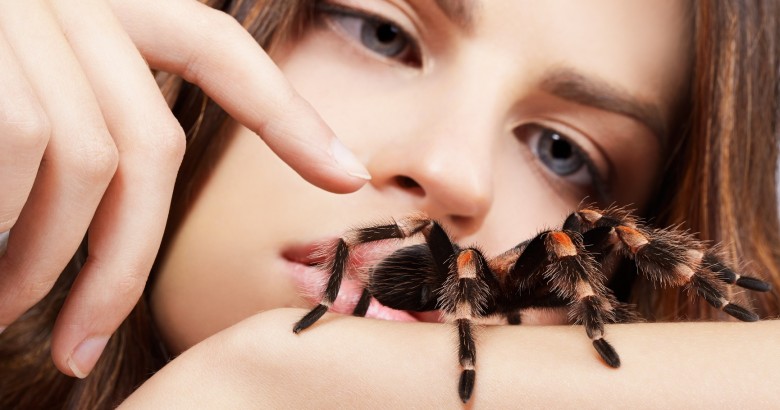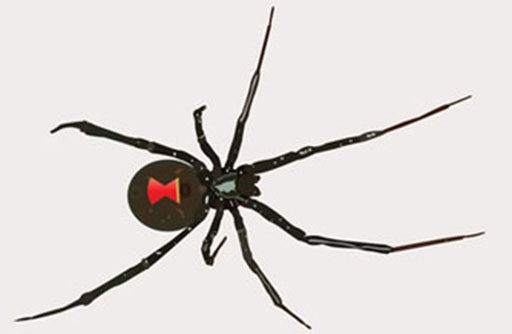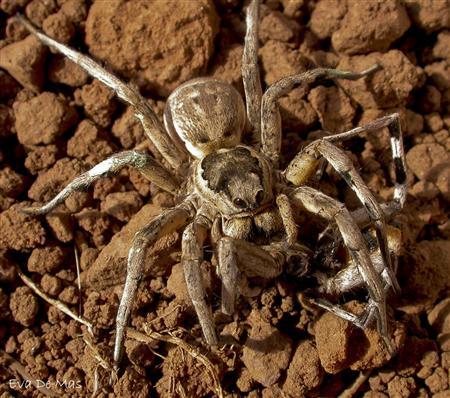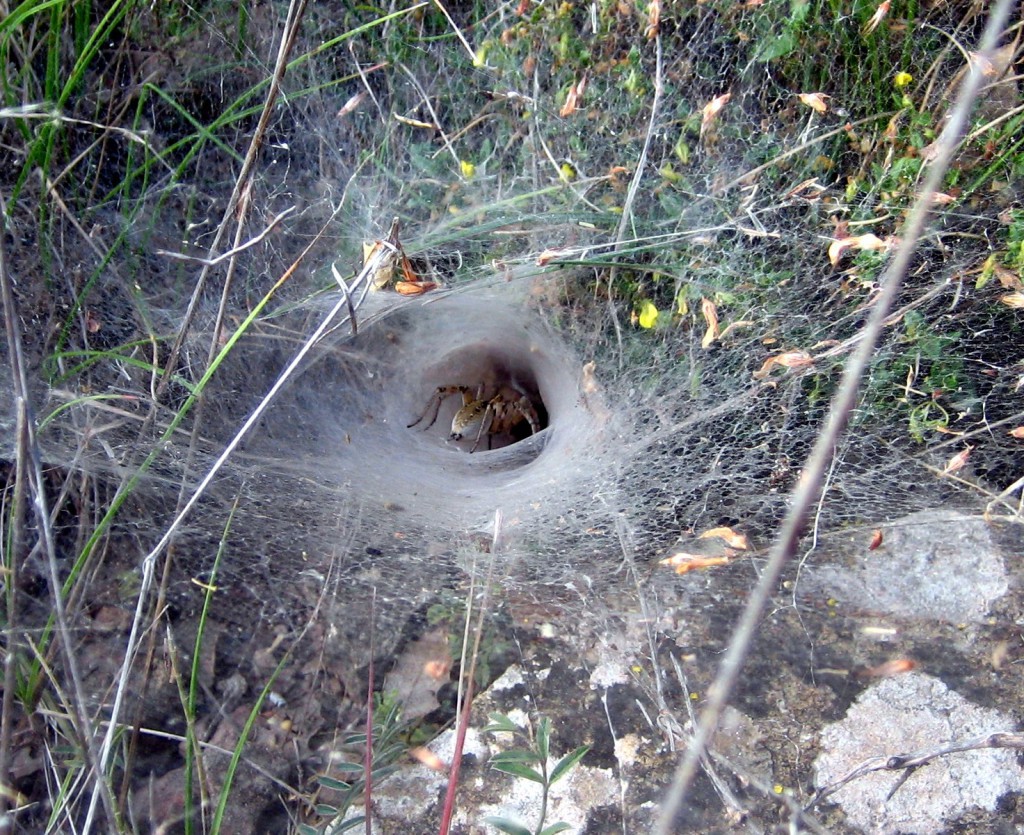Dangerous Spiders in Spain

Spiders in Spain. They come crawling, are nasty and the authorities in Spain warns of dangerous spiders that are seen in several places in Spain. If you get bitten, you may have strong reactions and can even die. But do not worry, there’s no reason to panic, the chance that you will encounter one of the real dangerous spiders are low, but it is good to be aware of the danger that lurks where you might least expect it.
Fear of spiders is the most common phobia. Some studies indicate that over 50 percent of women have symptoms of Arachnophobia. “Spider” is derived from the Danish word poison, meaning venom and cup that matters thick / bloated. Although most spiders are venomous, only 30 species have venom that is deadly to humans.
You do not swallow a certain number of spiders in your lifetime. This is a myth! It is too many coincidences that something like this could happen. And if you try to tickle someone who sleeps on their lips you will see that they will react quickly. And even if you should not react before the spider is inside your mouth, it still have to go to the very back of the tongue and you must swallow at exactly the right time for this to happen.
Spiders are very useful in the wild to keep other insects under control. A study in Switzerland showed that spiders eat about 38 million insects annually, per hectare. In weight this becomes about 150 kilograms. It will also take the other critters in your house that you do not want there. So maybe it is worth it to have a spider guard?
Toxic and dangerous spiders in Spain
Spain has many species of spiders, four of them can give you a nasty sting and potentially lead to a more serious problems. Many of the names will be familiar to you and strike fear into your heart. Authorities in Spain have repeatedly warned against the spread of dangerous and poisonous spiders. We will now go through those you should look out for.
In Seville there is an invasion of dangerous and poisonous spiders that can cause necrosis. The brown spider who is originally from the United States, multiply at a record pace. The stay in the nest, inside and often in corners of the house. Environmental and pest champion in el Montequinto, Pilar Muñoz explains to Europa Press that it has a distribution that is limited geographically to a particular natural area or environment. Normally the spider is not harmful to humans and there are rare complications. However, for those who are sensitive to any type of insect bite, can a bite cause serious skin and chronic skin ulcers.
Video of the toxic and dangerous spider
In the Canary Islands it is recently found a new type of spider in its kind, which is endemic – meaning that the spider is at no other place on earth. The spider is small, brown and has three eyes, set in a triangle. It is active at night and aggressive if they feel threatened. The new species variant also differs from others as it live in caves, crevices and rocks, while the non-endemic species Loxosceles rufescens, also located on the mainland, you will find where people live.
The Black Widow Spider

The Black Widow is a toxic spider which taxonomically belong among the senior spiders (araneomorphae). It is nicknamed widow or black widow and to some extent also used on other members of the genus Latrodectus. The bite is rarely fatal. They are found in scrub and in Spain’s mild climate and is active all year round, but are more likely to be seen during the mating season. The adult female is shiny and black with a red hourglass-shaped mark on the belly. The male’s brand, which is also hourglass-shaped, from yellow to white with a varying shade of orange and red. It also carries a small dot near the spinning gland which can vary in color. Usually it is also red, but separated from the hourglass. A large female spider of this subspecies can be about 3.7 cm long including legs. The body is then approximately 1.2-1.5 cm, while the male is at most half as large as the female.
Mediterranean Tarantula

A spider with a look that is worse than the bite. A Mediterranean Tarantula can be up to 14cms with a body the size of an egg. The bite gives you pain, but the effect is not worse than a wasp sting. Greater discomfort can be caused if removing the bristles on the back when it is threatened. This gives the same feeling as when you get fiberglass strands on your skin and can irritate for days. The spider is a night hunter, so it is unlikely that you will see it unless you love hiking at night time.
Mediterranean Funnel Web spider

This spider is linked to their lethal cousins in Australia and especially in Sydney. Mediterranean funnel web spider looks impressive and staying in typical funnel-shaped net. The bite is causing a sting instead of a serious bite. Look for them or avoid them in the thickets and woods or a shady spot behind the sheds, together with garages or in hedges. Active all year during the day and night and is one of the most common spiders along the Mediterranean Sea and the coastal areas.
Brown Recluse spider

Brown Recluse spider is one of these spiders to look for. Although they are less dangerous than their international cousins, they cause nasty bite that you may not feel at first but that after a few hours develops into a blister with a red center like a blink. The bite gradually becomes very painful. Brown Recluse spider is active throughout the year and hunt at night.
Symptoms of a spider bite
Using images alone, it can be difficult to distinguish a spider bite from other insects. To receive the proper treatment, it is important to recognize the symptoms of a spider bite.
1. Before you can examine it, it is important to wash the wound with soap and water. This will make identification bite much easier.
2. Check to see if the bite is raised. A common symptom of spider bite is that the skin becomes irritated and raised. It may look like a blister and will probably itch or sting. If the bite diminishes or disappears, it is probably a common house spider or other insect.
3. If you experience nausea, headache, severe skin damage, a lot of pain, or muscle spasms. Is this the signs and symptoms of a serious spider bite and you should see a doctor immediately.
Seeing a spider bite it is important that you get antivenom that you get at most pharmacies, hospitals and among physicians in Spain. It is recommended to kill the spider and take it with you for identification.
Read about toxic and dangerous snakes in Spain
Compare and Save up to 80% on your car rental! Best Price Guaranteed!


